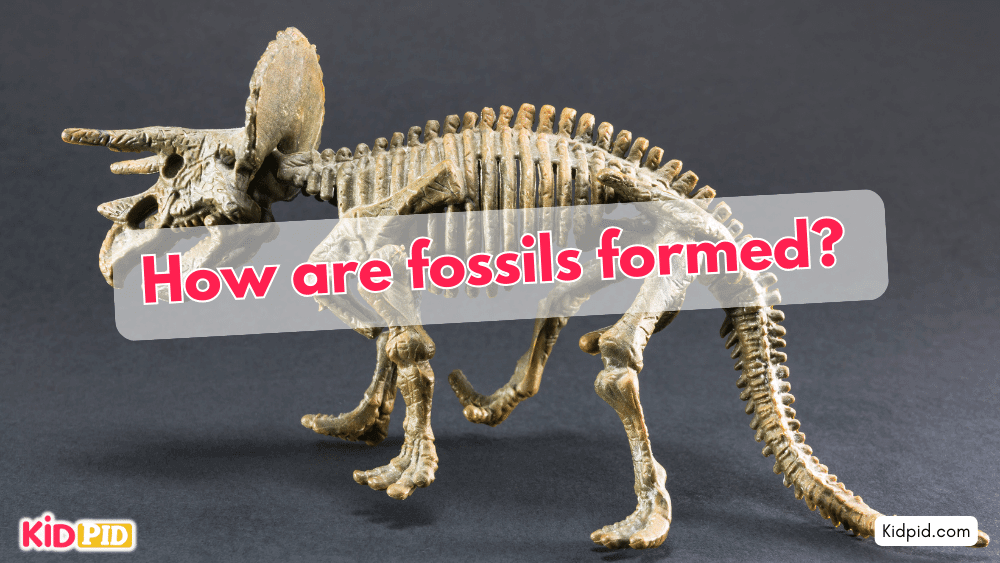The first step in fossil formation is when an animal dies and is quickly buried by sediment, which protects its remains from scavengers and slows down decomposition.
Contents
MCQs
1. What role does sediment play in the fossilization process?
A) Accelerates decomposition
B) Acts as a barrier against scavengers
C) Causes the bones to disintegrate
D) Increases the exposure to oxygen
Answer: B) Acts as a barrier against scavengers
Explanation: Sediment acts as a barrier, protecting the remains from scavengers and environmental factors that would otherwise lead to the complete decomposition of the remains.
2. What happens to the remains of an organism as it becomes a fossil?
A) They are crystallized
B) They decompose completely
C) They are replaced by minerals
D) They remain unchanged
Answer: C) They are replaced by minerals
Explanation: Over time, the organic remains of the organism are replaced by minerals from the surrounding sediment, turning what was once bone or tissue into rock.
3. Which environmental condition is least likely to contribute to the formation of fossils?
A) Wet, marshy areas
B) Dry, desert areas
C) Deep ocean beds
D) Rapid burial in sediment
Answer: B) Dry, desert areas
Explanation: Dry, desert areas are less likely to contribute to fossil formation because the lack of water and sediment makes rapid burial and preservation of remains less likely.
4. What is not a form of fossilization?
A) Permineralization
B) Amber encapsulation
C) Freezing
D) Petrification
Answer: C) Freezing
Explanation: Freezing is a form of preservation but not considered a form of fossilization in the traditional sense, as it does not involve the replacement of organic material with minerals.
Read More
- IEO Previous Year Question Paper for Class 7 (English Olympiad 2017, SET A)
- IEO Previous Year Question Paper for Class 5 (English Olympiad 2014 , SET B)
- IEO Previous Year Question Paper for Class 7 (English Olympiad 2018, SET A)
- English Grammar Quiz Worksheets for Grade 1
- IEO Previous Year Question Paper for Class 7 (English Olympiad 2017, SET A)
